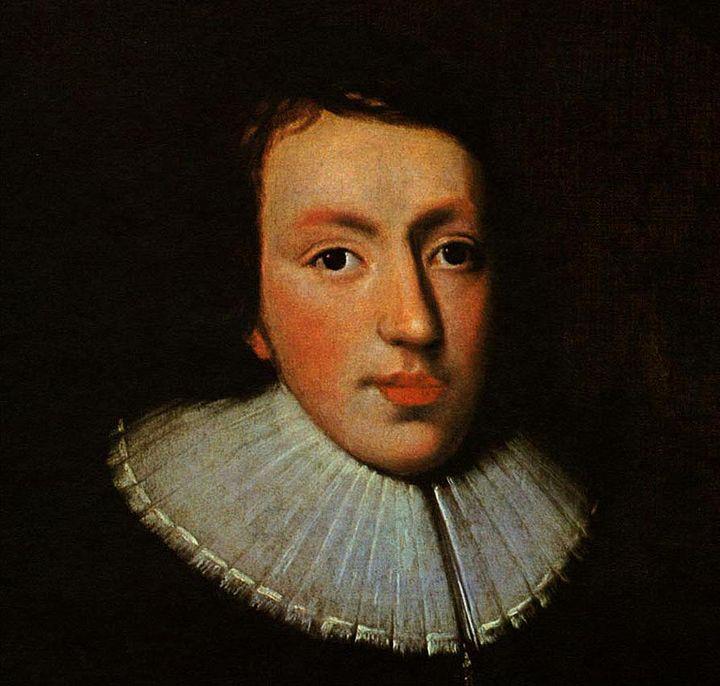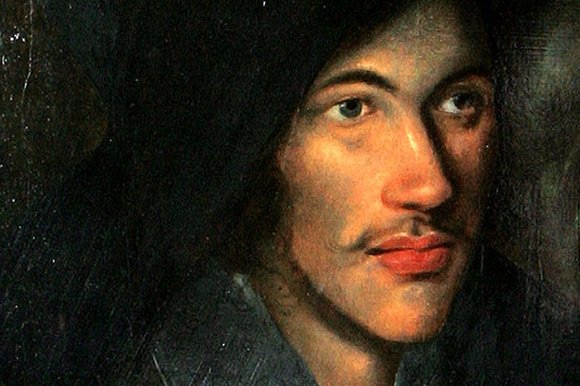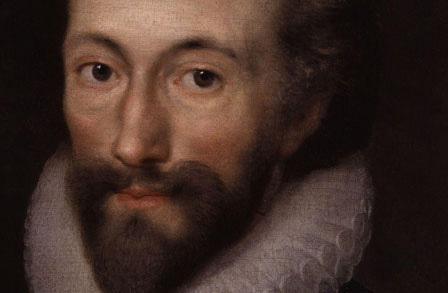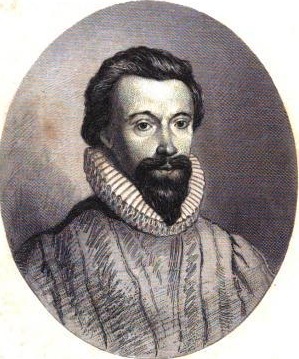John Donne– John Donne was a famous English poet of the 16th century, who wrote endlessly about religion, love, sexuality. His outlook was far more advanced than the 16th-century society people could bear and this is why he had faced severe criticism. Yet against the odds, he was made the cleric of Church of England. He was a representative of metaphysical poetry. He wrote about the mundane topics in the form of satires. He died on 31st March 1631.
Poetic Devices in The Canonization-
The major and most important metaphor was made by comparing the lovers with a phoenix.
Style-
The poem is written in a variable meter. But the structure concludes to iambs. Iambs are formed with combining an unstressed syllable with a stressed syllable.
Summary of The Canonization-
The poem is a plea by the poet to leave him and his lover to their own will. The poet seems slightly irritated by the interference caused by the addressee, who is constantly ruining the romance between them. The poem is a sarcastic remark to those who do not mind their own business and keeps poking their nose into the peace of others. The poet wants to be in isolation with his lady, in a manner that no one looks with their doubtful eyes towards and upon them. He says one should find appropriate work to keep himself busy rather than keeping a check on the poet and his lover. In the first stanza, the poet in quite an irritable tone, tries to call out to the addressee, to “hold his tongue,” as the addressee seems to talk against his will and probably asks him to prevent his ways leading towards sheer romance. He tries to convince the addressee by giving him the benefit of mocking his ill health or meagre wealth or his old age, but not to say anything in disregard to his romance. He advises the addressee to indulge in far more productive and common job, to employ the addressee to some work, while he can make love freely. He asks him to get a place and “observe his honour,” and suggests some other rightful jobs to keep the addressee busy. He asks the addressee to “improve” himself.
In the second stanza, he rages out a rhetoric question- who is being hampered by his romance, as he disturbs no economy neither does he ruin the environment, then why are people bothered about his one and only indulgence. He continues in a dramatic tone that, there are no “merchants” facing a loss because of his “sighs,” neither his sadness is depriving others of spring. There is no plague caused due to his romance. He feels himself better employed with his lover. Lawyers and soldiers will still continue their errands to fight war and lawsuits at the same time he continues loving.
As the poet goes further, he seems to justify his love against the norms of the 16th-century society. He knows he cannot change the mindset of people, so he wants to call him and his lover independent of others. He says they are their own keepers and destroyers. The mystery of love lies in the neutrality of souls. They are a completely different species indifferent to earthly responsibilities and behaviour.
In the fourth stanza, he says that if during lifetime we cannot make love, we can go through death to be together. The poet is for sure immensely in love, as he says that if they didn’t get a recognised funeral, they can live forever in his verses. He wishes to write poems to celebrate their love, so that after they die, people can still read and remember them as lovers. By writing poems he will make their love eternal and timeless. The whole point of canonising their love is to be immortal.
In the last stanza, the poet claims that when their souls will look down on earth, they will feel pity because no couple will ever be able to match the love they held. They are the symbols of powerful love, the saints of love.
Critical Analysis of The Canonization-
The poem is a mere instruction given to readers to leave the lovers alone and just let them be. The poet has been seen moving through different phases throughout the poem. Initially when he is complaining as a child not to be controlled and later he wishes to enter sainthood, there is a major transformation in the tone of the poem. John Donne wrote in a simple language as if to proclaim his setting amongst others. The poem is a personal outlook of his personal life through which he tries to justify sexuality as a common topic of discussion. The poem is the poet’s imagination to unfold love at a heavenly state and not to look at it as something to be looked down upon. But people really didn’t accept his way of thinking, and in turn served him with criticism. But he still wants to be isolated in the matters dealing with romance.
Tone of The Canonization-
The poet is seen to be talking to an addressee, in the first stanza. Then he moves to the earthly state of accepted behaviour and responsibility and denotes more than one person. Then he goes into a mysterious arena, where he compares his lover and him to a magical bird, talking about being one in two different bodies. In the last stanza, he turned himself to be one to be eternally celebrated. The fact of canonising his love is to make the love he shares with his lover, immortal.
Conclusion- The poem defines the setting of the 16th century, when love and sexuality were discussed in closed rooms. This poem can be said to a potential harbinger of revolt and change.
Some online learning platforms provide certifications, while others are designed to simply grow your skills in your personal and professional life. Including Masterclass and Coursera, here are our recommendations for the best online learning platforms you can sign up for today.
The 7 Best Online Learning Platforms of 2022
- Best Overall: Coursera
- Best for Niche Topics: Udemy
- Best for Creative Fields: Skillshare
- Best for Celebrity Lessons: MasterClass
- Best for STEM: EdX
- Best for Career Building: Udacity
- Best for Data Learning: Pluralsight













